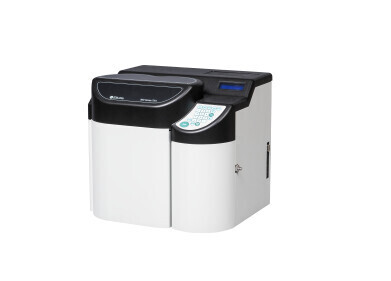Gas Chromatography
Speeding Up Oil Degradation with Microorganisms - and Chromatography
Aug 21 2020
Oil spills are a consequence of how we live today – if we want to use fossil fuels there are consequences we must pay. But unfortunately, the release of oil into the land, sea, and air also causes untold long-term damage to many vital and fragile ecosystems. One ecosystem that is sometimes forgotten about is the soil beneath our feet. But without clean soil we can grow crops and plants on, our food chain would collapse.
A recent paper published in the Journal of Marine Science and Engineering reports on a study by researchers in Japan in how we can speed up the bioremediation of polluted areas. In the paper - Potential of Biosurfactants’ Production on Degrading Heavy Oil by Bacterial Consortia Obtained from Tsunami-Induced Oil-Spilled Beach Areas in Miyagi, Japan – the researcher used chromatography to analyse how well bacteria broke down pollutants in samples. Can chromatography help us clean up?
Bioremediation – it is a clean-up job
Soil and water pollution caused by oil and petroleum are amongst the most severe of global environmental problems. The hydrocarbons we use to power the planet are highly persistent when they get into the environment – they have been safely stored underground for millions of years before we decided to release them. So, when we spill them into the soil and water they stay there – and can pose serious health risks to animals, plants, and humans.
To combat soil, water and air pollution, there are several methods that can be used to clean up the pollution. Dispersal and containment are commonly used methods to combat oil spills at sea – although the dispersal agents can sometimes be as hazardous as the oil to the wildlife affects by the spill. Natural degradation can be used to, waiting for the oil to break down due to the sunlight, wind, and other environmental impacts on the pollution.
But perhaps one of the most exciting and clean methods is bioremediation – which is simply the process of using biological organisms to clean up an environmental contaminant. This might involve introducing a new organism to the site or simply adjusting the environmental conditions to allow the indigenous microorganisms a better chance of breaking down the pollutants.
Chromatography analyses the breakdown
The researchers in Japan studied six bacteria consortia from contaminated sites in Japan that had shown some potential in degrading oil spills. The bacteria and samples were analysed using gas chromatography with flame ionization detector (GC-FID) to measure how well the bacteria degraded oil samples. The use of chromatography to analyse oil samples is discussed in the article, Analysis of Polynuclear Aromatic Hydrocarbons (PAHs) in Edible Oil to 0.5 ppb. The team were able to identify the bacteria species and to assess the species that contributed to the greatest hydrocarbon degradation. The work could help speed up the bioremediation of sites affected by oil spills.
Digital Edition
Chromatography Today - Buyers' Guide 2022
October 2023
In This Edition Modern & Practical Applications - Accelerating ADC Development with Mass Spectrometry - Implementing High-Resolution Ion Mobility into Peptide Mapping Workflows Chromatogr...
View all digital editions
Events
Jan 20 2025 Amsterdam, Netherlands
Feb 03 2025 Dubai, UAE
Feb 05 2025 Guangzhou, China
Mar 01 2025 Boston, MA, USA
Mar 04 2025 Berlin, Germany












